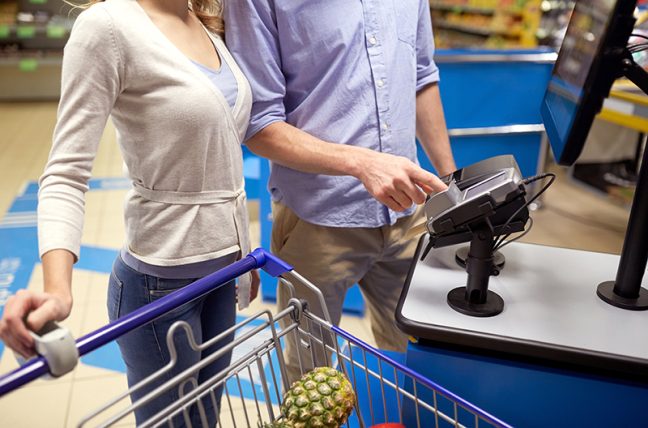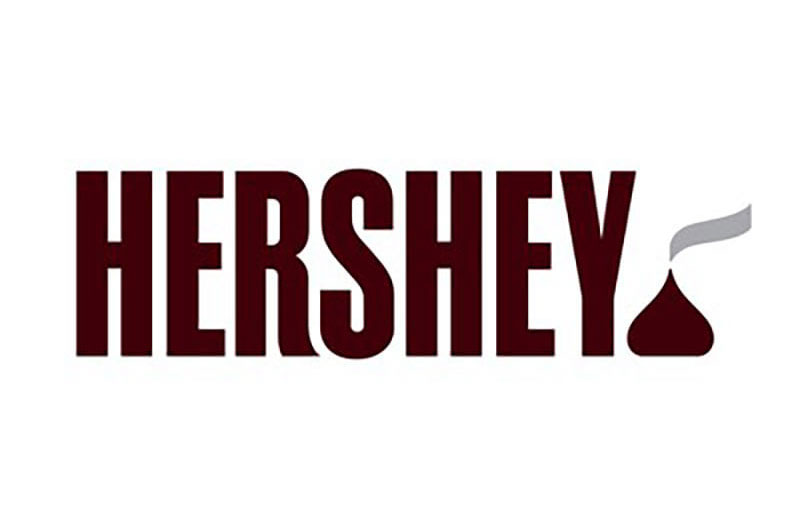Nicole Capes, senior manager of retail experience with The Hershey Co., said 60 percent of shoppers prefer self-checkout because they feel like it is faster.
To learn what works best for an optimal queue, Hershey spent countless hours observing shoppers in self-checkout areas in different retail environments, including small and large format, grocery, mass market and dollar. The company even outfitted some shoppers with eye-tracking glasses and then talked to them about their experience.
Hershey found that the increase in self-checkout means an increase in speed – few shoppers experience a line at self-checkout – allowing for little of what they call “forced dwell” time.
According to Capes, Hershey’s initial concern was that shoppers would not engage with products if a line never formed. However, the company learned that in well-designed queues, shoppers want to dwell and treat themselves.

Hershey discovered that 90 percent of shoppers experience no wait at self-checkout. Despite lines rarely forming, the company sees a 34 percent front-end sales lift in stores executing self-checkout queues.
The longer a shopper dwells, the more likely they are to convert, but the design and layout of a queue line play a role in how likely a shopper will make an unplanned purchase.
Suboptimal queue designs divert shoppers’ attention away from dwelling and instead focus them on navigational elements, which can reduce conversion by nearly 20 percent.
An optimal queue design that encourages dwell should navigate shoppers through a single entrance – a straight queue with a wider aisle, lower sightlines and enhanced self-checkout navigation lights.
After compiling all the insights from its in-store research, Capes said Hershey identified six queue design principles that – when executed properly – have been proven to increase conversion within a queue and enhance shopper satisfaction.
The principles range from sightlines to the optimal shape and size. Leveraging them and analytics, Hershey is partnering with retailers to co-create and optimize queues to deliver shopper-driven solutions that best fit retailers’ spaces to maximize sales and enhance shopper satisfaction.
Front-end purchases
When approaching any front-end project, Capes said it’s important to look at it from the following three lenses: productivity and how sales would be impacted; operational efficiencies, including how to improve queue wait time; and shopper satisfaction and whether the project will enhance the shopping experience.
According to Hershey Shopper Insights:
- Four percent of front-end purchases are unplanned.
- Customers do not like to interfere with another shopper’s area, so products should be within arm’s reach of the transaction space.
- Shoppers will also use the first available terminal, regardless of what products are placed nearby.
- Once customers are in the process of checking out, which lasts an average of 65 seconds for a two- to three-item basket, they would rather forgo a desired item than go find it.
- For these reasons, Hershey recommends placing the top categories, brands and pack types at every register.
- Shoppers often like to treat themselves at the end of their shopping journey, and self-checkout locations should provide the opportunity for customers to do so.
- While 63 percent of shoppers surveyed were extremely or very interested in self-checkout, that interest declined by 7-9 percent when the terminals did not contain items for purchase.
- There is also an increase in 3D camera technology that allows shoppers to check out without scanning their items. Store employees seem to like this option, and shoppers love that the process is intuitive.
- Consumable categories make up more than 90 percent of front-end purchases and should be prioritized within a queue.
- The top three categories include beverages (soft drinks, energy drinks and water), confection (candy, mint and gum) and snacks (salty, jerky, nut/seed, cookie/cracker).
Second-basket insights
The second basket occurs when shoppers travel to a store to pick up their online or “click-and-collect” grocery order and then buy more items in-store.
This behavior has been increasing since the start of the COVID-19 pandemic and is likely to maintain or increase in the future.
Hershey’s insights found that 10 to 20 percent of click-and-collect trips include a second basket with an average purchase of $38, with snacks and candy among the top five second-basket additions.
Furthermore, nearly 70 percent of second-basket transactions occur through self-checkout.
To capitalize on these unplanned purchases, Hershey recommends retailers add incremental space to self-checkout queues, expand item assortments and utilize display merchandising for take-home and seasons.
Read more grocery equipment news from The Shelby Report.

